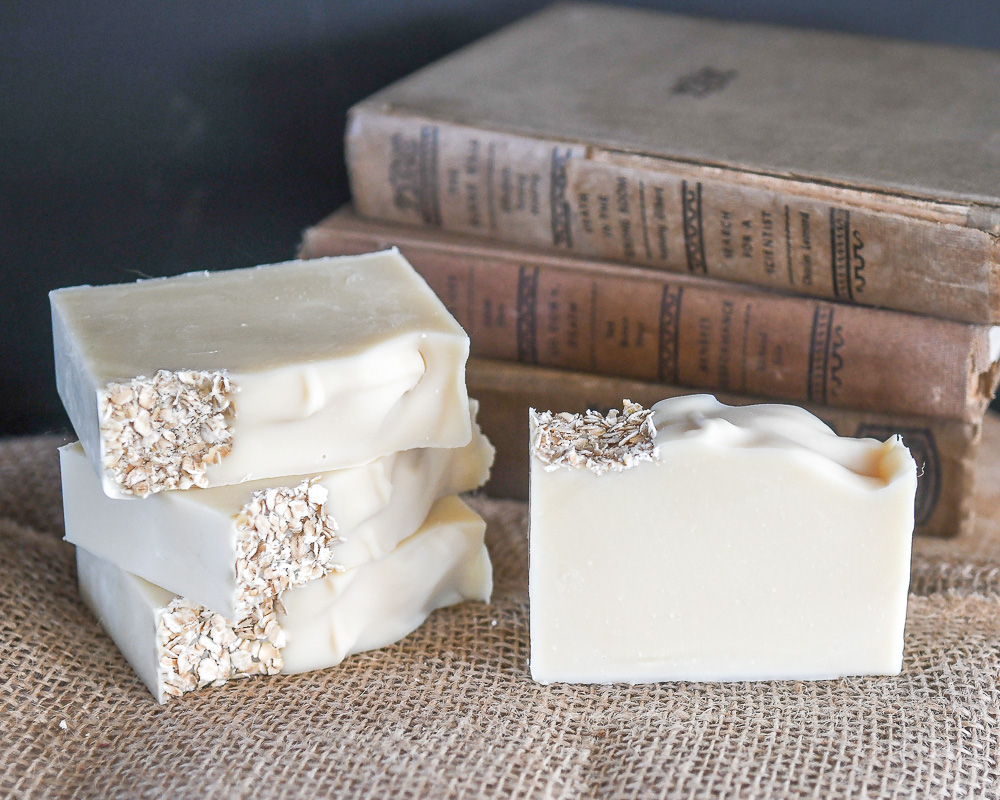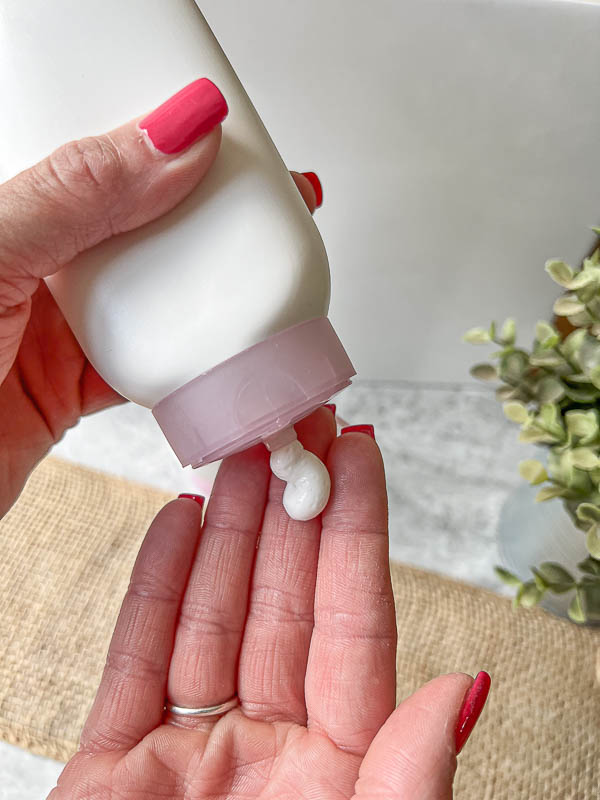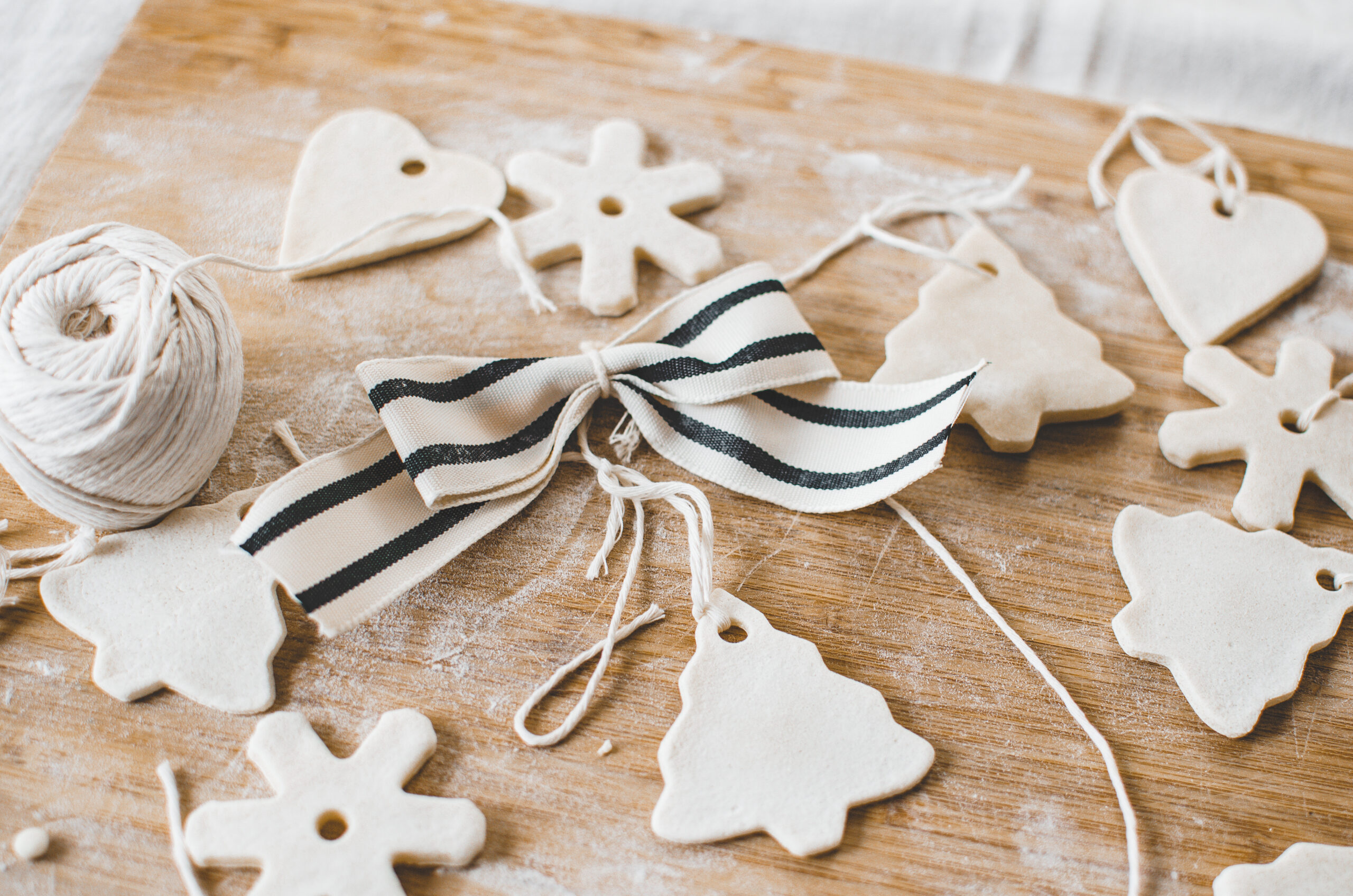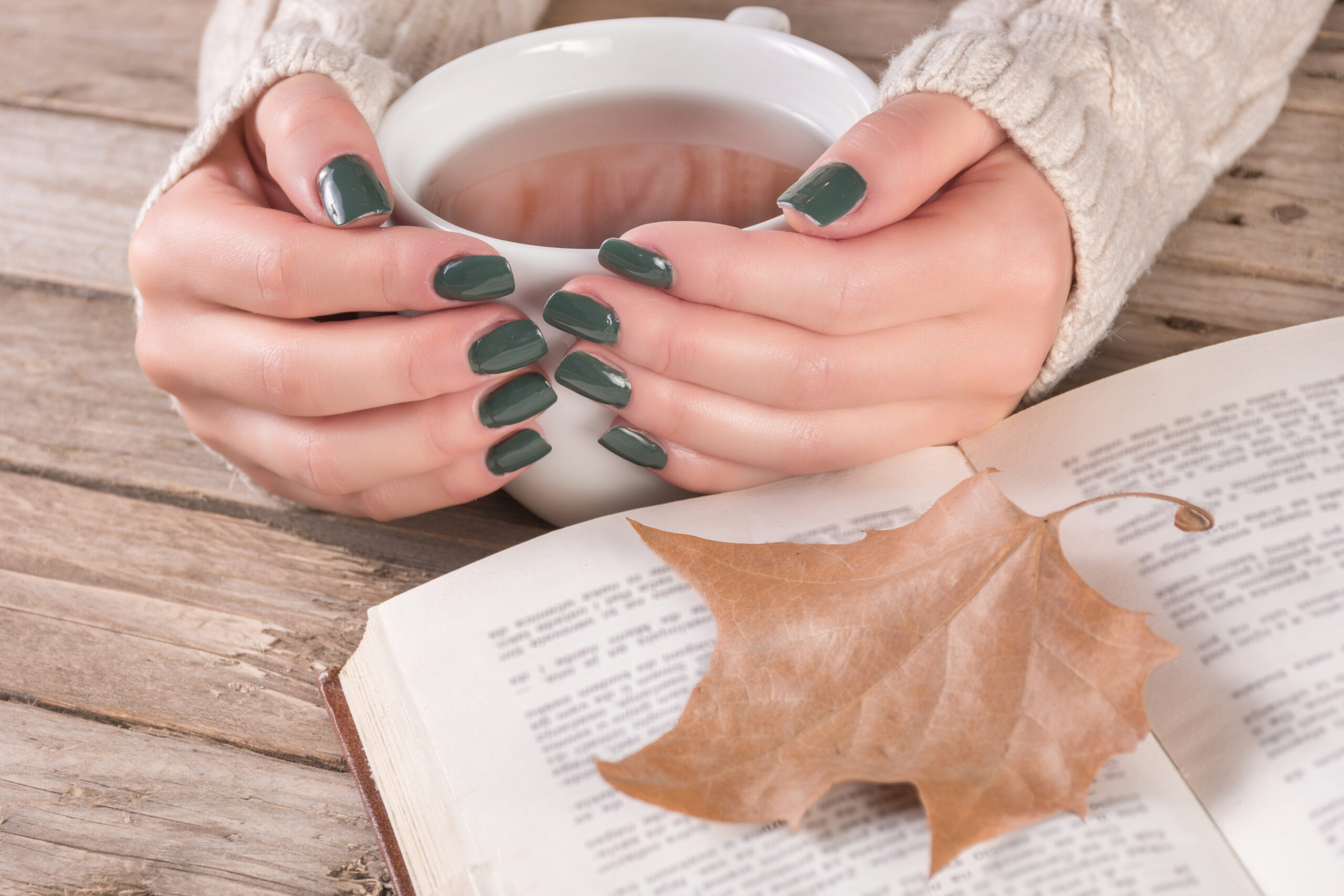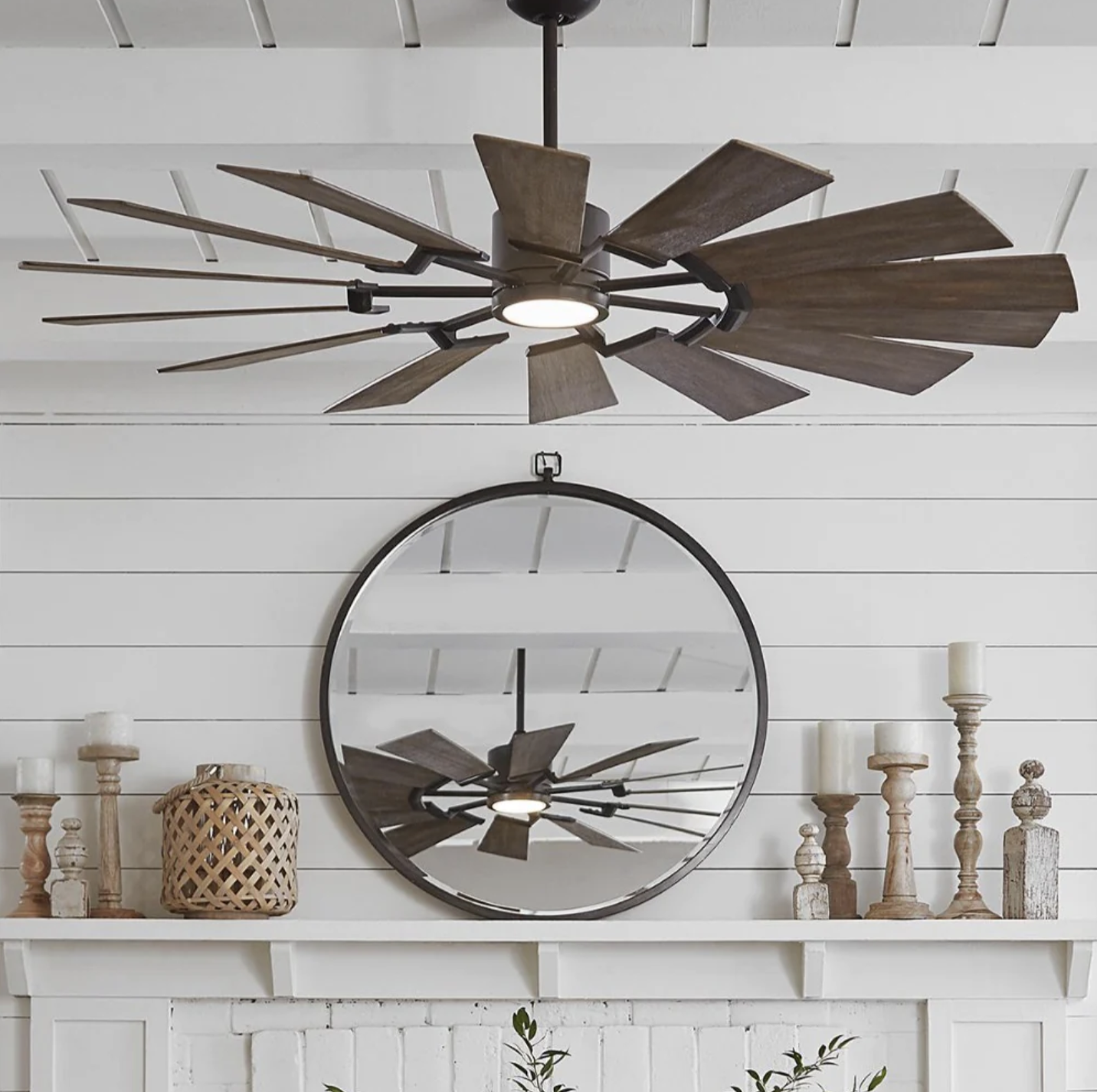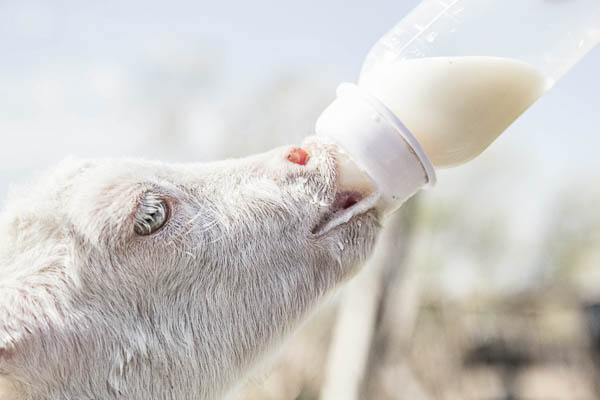
How to Make Soap with Goats Milk
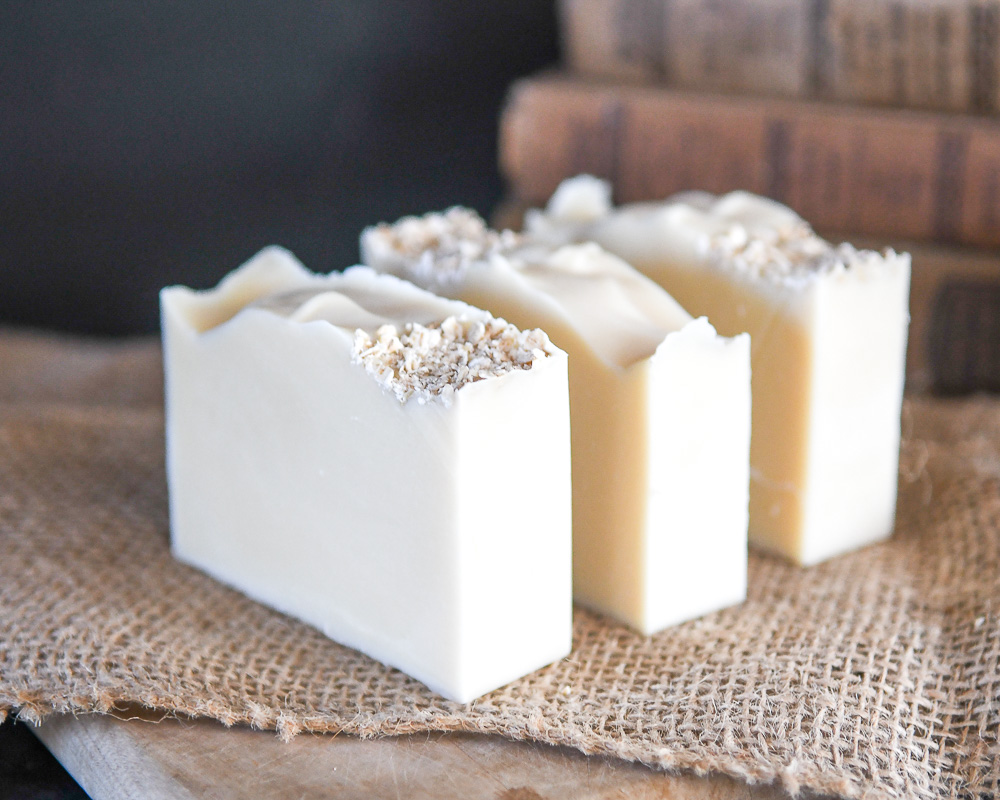
As soon as I bought the farm, I wanted to have goats. Most importantly, I wanted to make homemade cheese, soaps and lotions! Since starting my goat milk product journey, one of the favorite things I’ve learned is how to make soap with goats milk.
Did you know, most products in today’s market are considered cleaners and synthetic detergents, not soap. As more people become aware of the harmful effects of the chemicals used in our everyday personal hygiene products, there has been a growing demand for more natural options.
Consequently, goat milk soap has gained in popularity due to it’s simplistic ingredient list and numerous benefits for the skin.
Let me share with you all the reasons I enjoy goat milk soap more than commercial soap products.
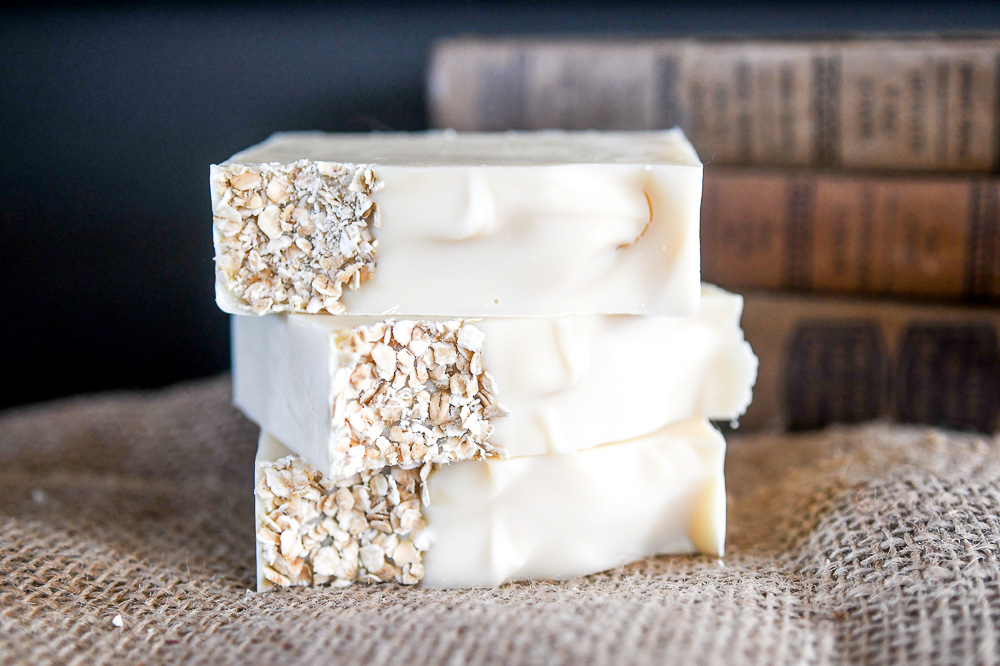
What is Goats Milk Soap?
Soap made with goats milk is made using a process called saponification. Saponification is an age-old chemical process creating soap using a combination of acidic oils and fats, mixed with base called lye.
Goats milk is high in saturated and unsaturated fatty acids, which makes goat milk soap rich, gentle, and nourishing.
Benefits of Goat Milk Soap
Typically, commercial soaps include harsh surfactants which strip your skin of its natural oils, leaving it leaves your skin dry and often irritated.
Goats milk contains high amounts of fats, particularly caprylic acid, which aids in the removal of dirt and debris without stripping the skin of natural oils. Additionally, goats milk is known to be rich in natural fatty acids and cholesterol, which helps maintain natural skin membrane.
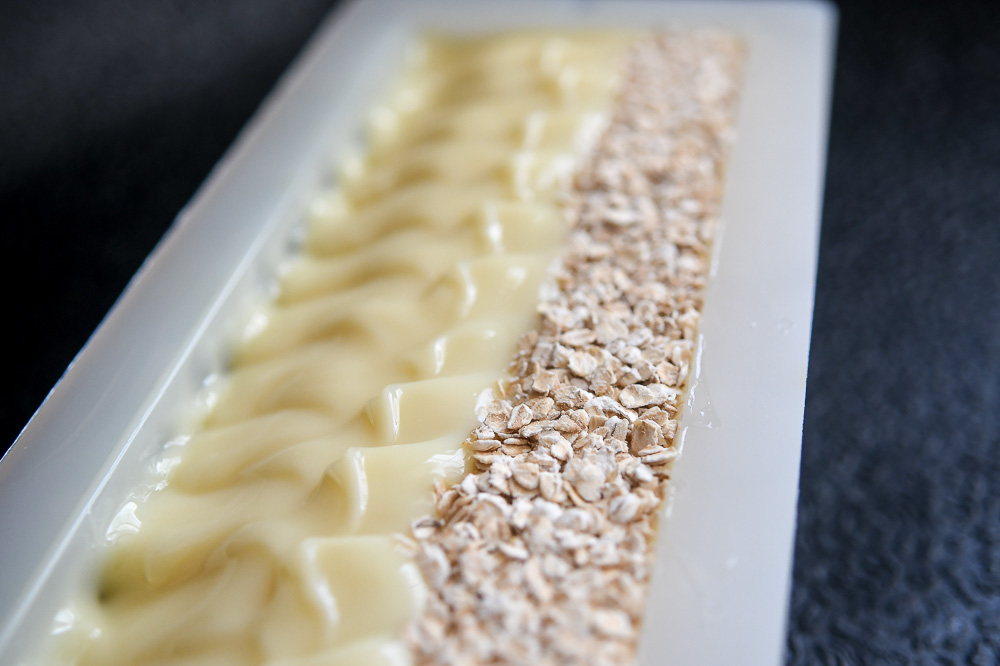
Also, goats milk is a good source of selenium, a mineral known to aid in the protection from skin diseases and used to improve psoriasis symptoms like dry skin.
Finally, goats milk is a good source of vitamin A, known to have excellent anti-aging properties. In fact, Vitamin A (and subcategories such as retinoids) is the first vitamin approved from the Food and Drug Administration (FDA) as an anti-wrinkle agent due to the fact that is changes the appearance of the skin surface.
Let's Make Goats Milk Soap!
The Supplies
First, let’s talk about the supplies you’ll need.
- Stock Pot
- Scale
- Bowls to Measure Oils
- Small Glass Bowl to Measure Lye – it will corrode metal so be careful!
- Large Glass Bowl to mix Lye and Goat Milk
- Spoon/Spatula
- Thermometer
- Stick Blender
- Soap Mold
- Safety Gloves
- Small Metal Strainer
The Ingredients
Now, let’s talk what ingredients you need.
- Frozen Goats Milk – Ideally in Cubes
- Lye
- Coconut Oil
- Olive Oil
- Fragrance Oil
Let's Make Soap!
This recipe is for cold process soap, meaning saponification happens at lower temperatures to minimize scorching of the goats milk.
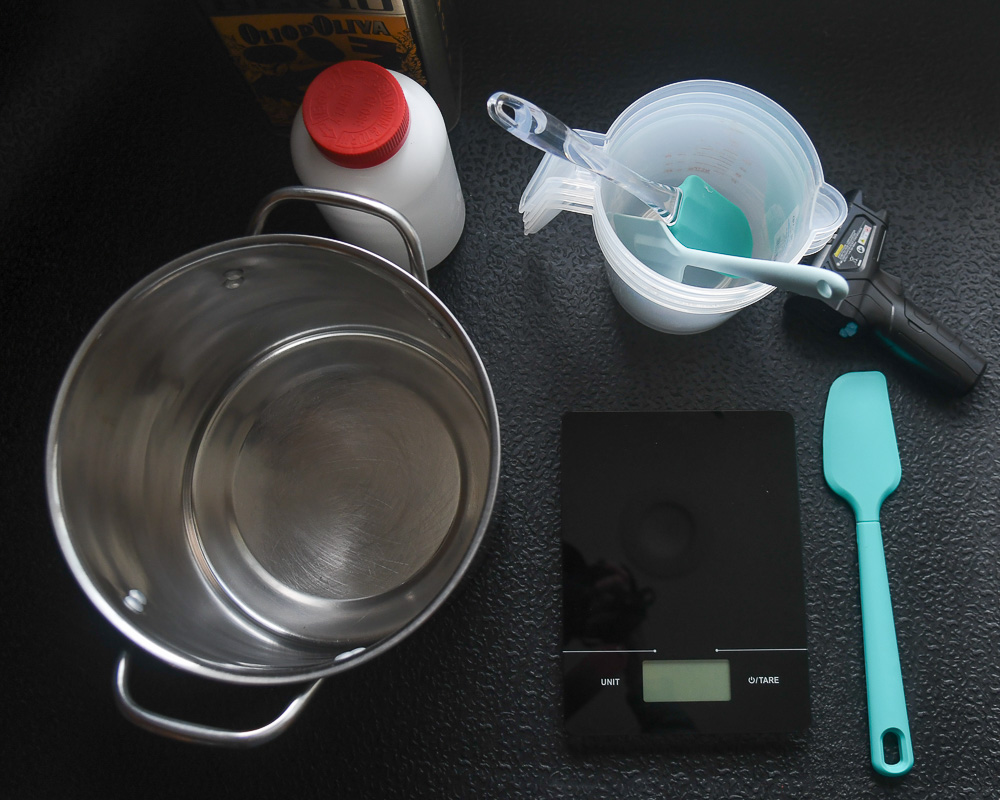
It’s always best to gather all your supplies before you start. Some of these steps move quickly, so the more prepared you are, the better it’ll go!
Mixing Lye and Milk
It’s important to mention lye can burn if it touches your skin, so we want to be very careful when handling. Therefore, before handling your lye, make sure you put on safety gloves and glasses.
Now, carefully measure out your lye into a small glass dish. Always use glass when measuring lye, seeing that it will eat through plastic and corrode metals.
If you’ve never used a kitchen scale – place the bowl on your scale and zero it or “trace” it. This eliminates the weight of the vessel you’re measuring into. Now, you can start measuring.
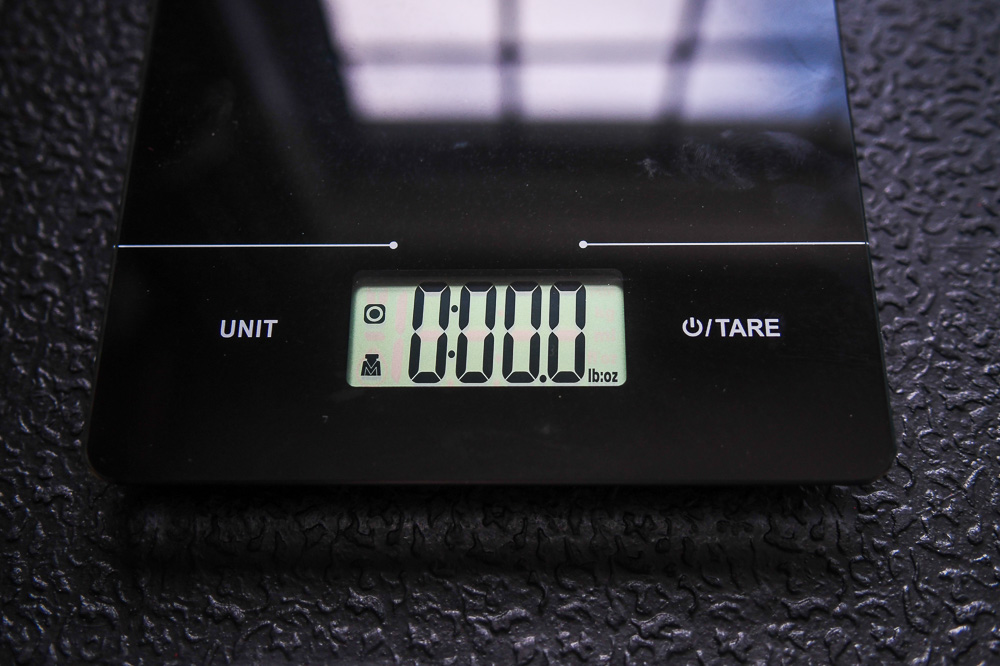
Once your lye is measured and put aside, you can now measure out your frozen goats milk.
I HIGHLY recommend freezing your goats milk for this cold process because it will keep the milk from scorching or burning when mixing/reacting with the lye.
Naturally, I freeze mine in smaller cubes so they are easily measured.
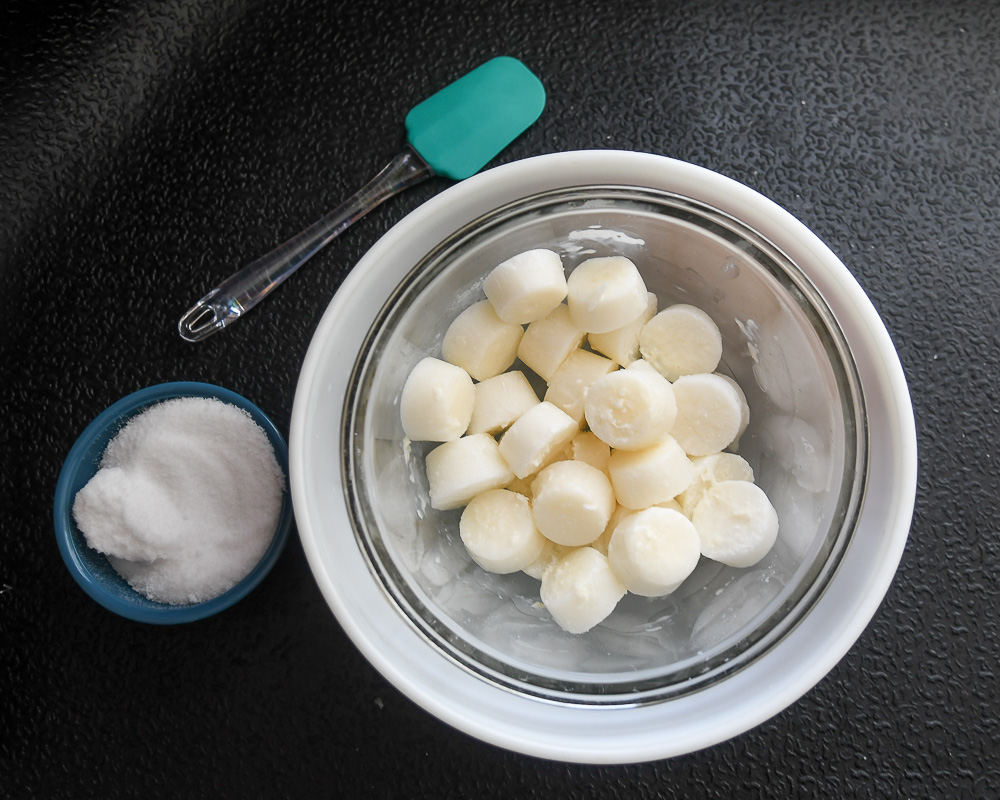
Once you lye and milk are measures, you can now start to combine them. In a glass bowl, mix a little bit of the lye with all of your frozen milk.
At the same time, use your thermometer and make sure the reaction doesn’t rise above 70 degrees. By all means, feel free to use an ice bath to help control the temperature of this reaction.
See below.
As you slowly stir small amounts of lye into the frozen milk, you will start to notice the frozen milk melting. There’s no rush here so don’t get mixing too quickly!
Frequently remember to check the temperature of your lye/milk mixture as you continue to work through your lye.
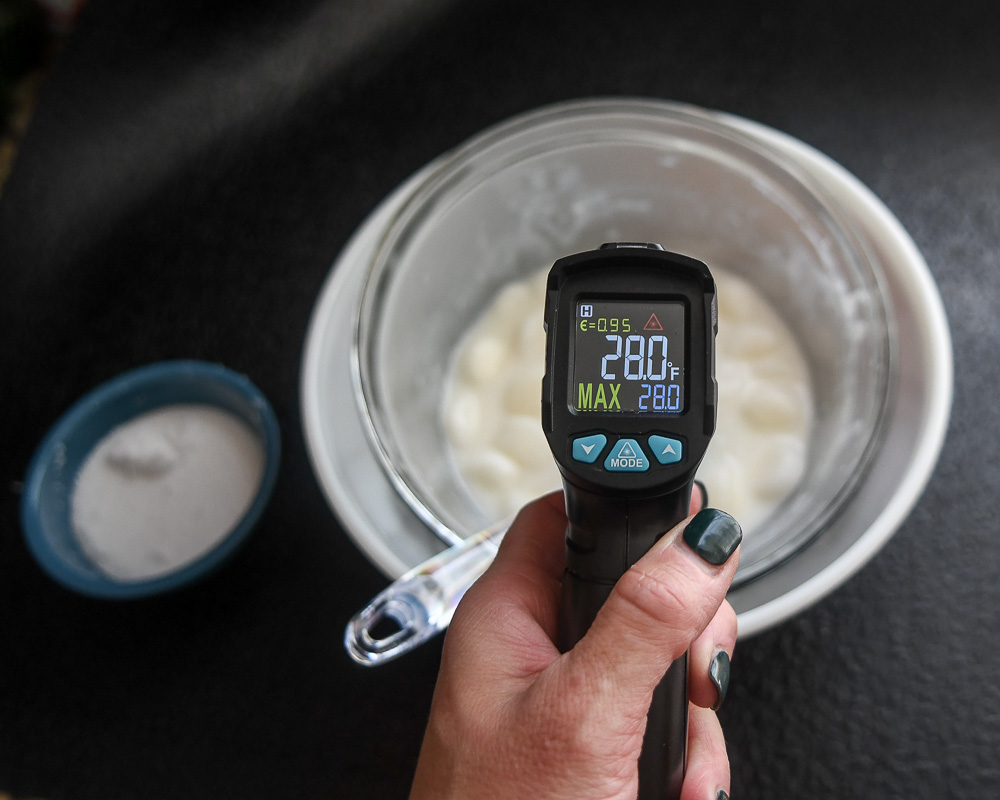
Adding the Other Oils
In between mixing little-by-little your lye with your frozen milk, take time to measure out your oils.
Now combine the coconut and olive oil directly in a large stock pot. If the oils are not already melted, simmer on very low heat to make sure they’ll completely combined. On a hot day, you might not need additional heat!
Afterwards, mix out the fragrance oil. I usually keep any notes for each oil handy in case it’s mentioned that it accelerates or discolors. Set aside.
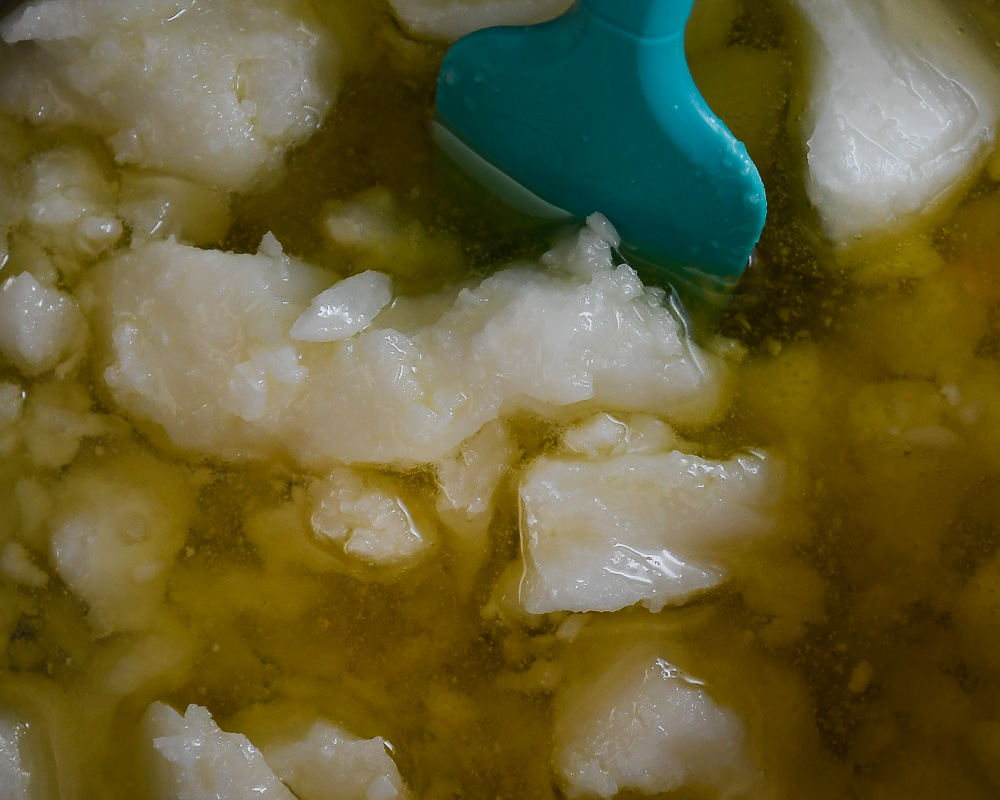
Combining it all Together
Once all your lye and milk is fully combined, and staying below 70 degrees, strain it through a small wire strainer. This helps remove and small pieces of lye that didn’t dissolve fully.
Now it’s time to combine all your ingredients. The key to successful saponification, is to make sure the lye/milk mixture and the oils are within 10 degrees of one another.
Now, combine your oils and your lye/milk mixture together in the large stock pot.
Using a stick blender, mix all ingredients together on low speed. Most importantly, keep the blender close to the bottom to avoid adding any additional bubbles into your soap.
What you’re looking for is a “thin trace,” a way soap makers describe a thickening of the mixture. This is the consistency of very thin pudding.
Now is the time to add your fragrance oil. Lightly blend together. If your mixture starts to accelerate and become thick (like pudding) make sure you move quickly and pour it into your mold(s).
The consistency you’re looking to achieve is called a “thin trace” – a term used by soap makers to describe a thickening of the mixture. This consistency is similar to very thin pudding.
Now it’s time to add the fragrance oil. Again, using your stick blender on low, lightly blend together.
If your mixture starts to accelerate and become thick (like pudding) make sure you move quickly and pour it into your mold(s).
Pour into Molds
Finally, it’s time to pour your soap into your mold(s). Take a breath! You made it!
Once your mixture is in it’s mold, cover and store in a cool/dry place. Even though you don’t have to, I really prefer to place mine into the refrigerator. This prevents any rise in temperature and minimizes cracking on the surface of your soap.
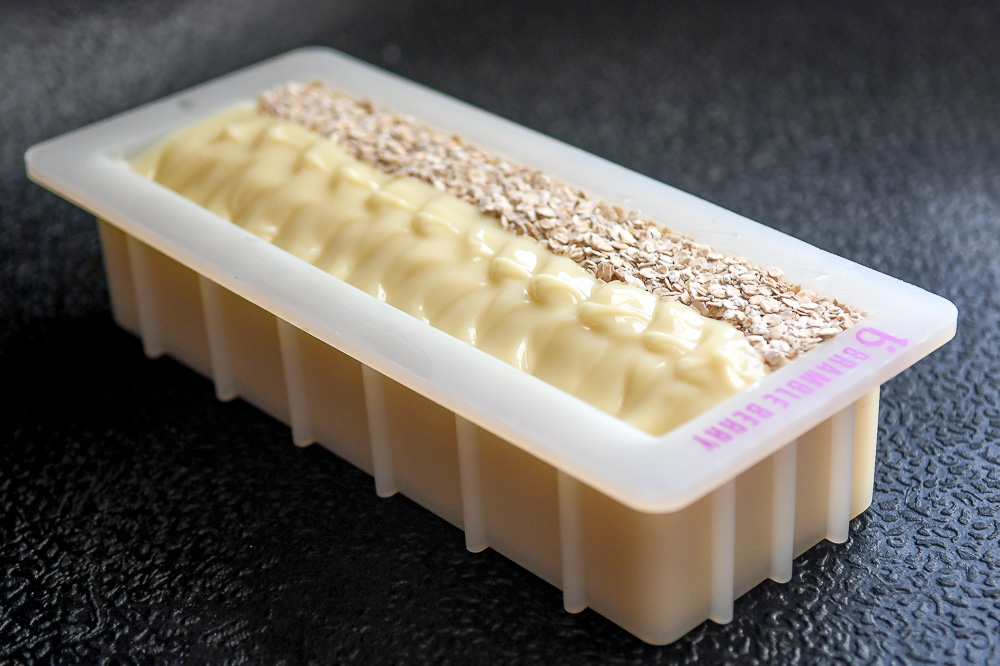
If you’re concerned about “ash” or a white residue on the top of your soap, you can spray the tops quickly with rubbing alcohol and cover before placing in the refrigerator.
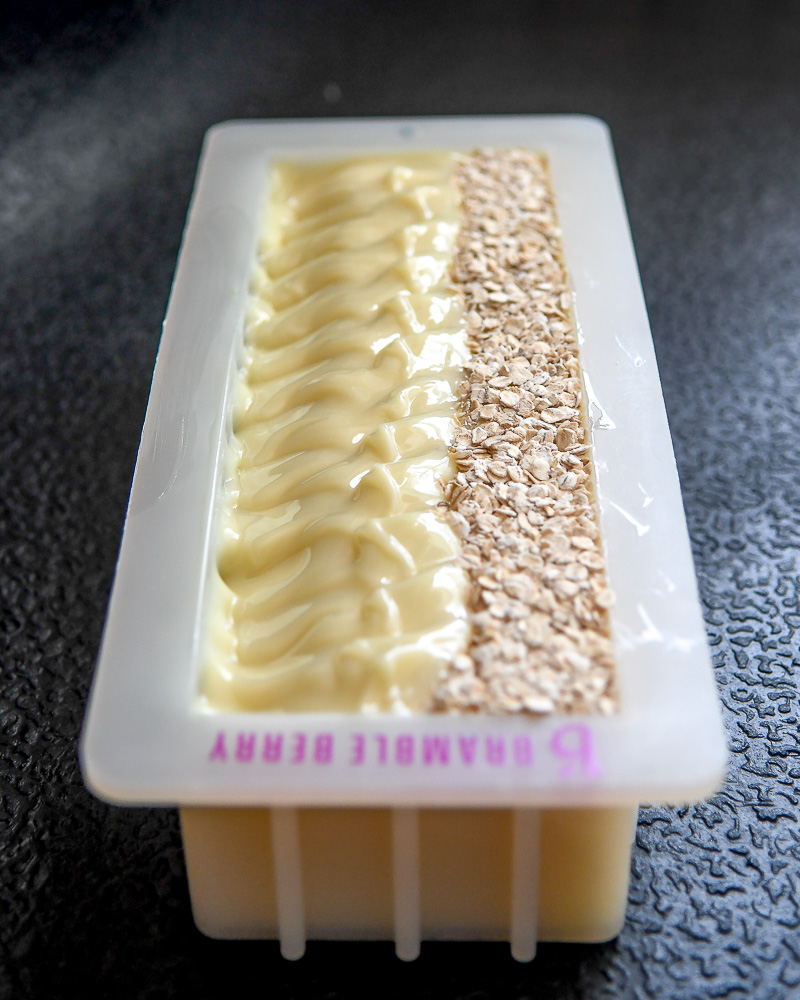
Let it Cure
In 24-48 hours you can unmold the soap.
Typically, I wait 4-6 weeks before selling or using my soap. This allows the soap to cure, making a better quality of soap.
Of course, you can use any soap right away, it just dissolves quickly because it hasn’t had the time to cure.
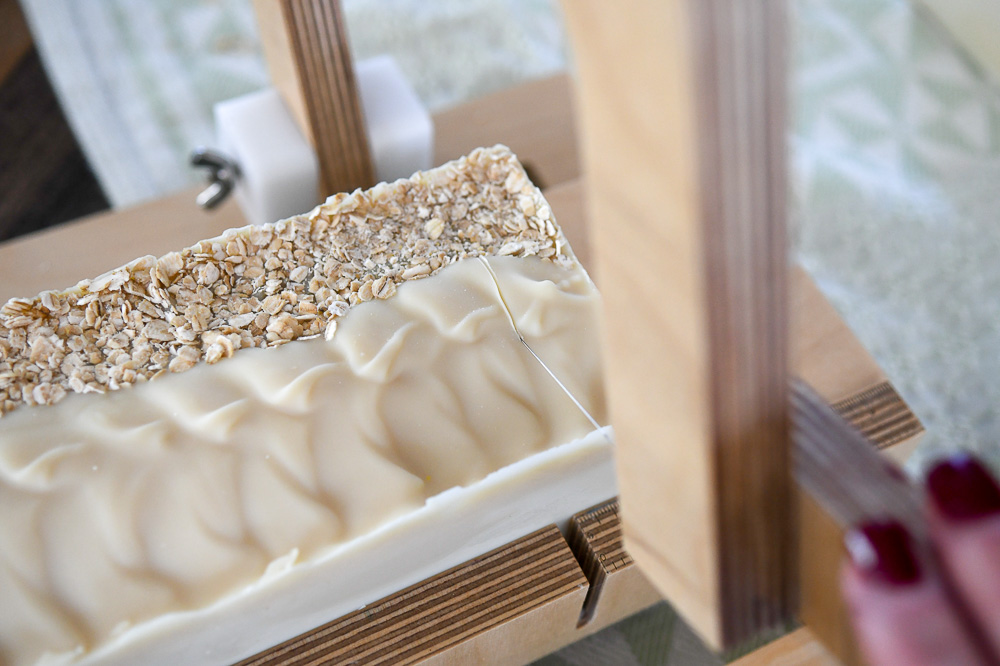
Goat Milk Soap Recipe
This recipe is for 4 ingredient col processed goats milk soap. This soap is creamy, frothy, and delightful to use on your skin year round!
Ingredients:
- 16 oz Olive Oil
- 16 oz Coconut Oil
- 4.8 oz Lye
- 10 oz Goats Milk
- 1 1/2 TBSP Fragrance Oil
Directions:
- Put your gloves and safety glasses on!
- Measure 4.8 oz of Lye into a small glass dish
- Next measure 10 oz of frozen goats milk
- Using an ice bath, slowly combine goats milk and lye. Check temperature regularly to make sure mixture doesn’t go over 70 degrees F.
- In between mixing your lye and milk together, measure out your oils. Combine in a large stock pot.
- Once your lye and milk are combined, strain through a small metal strainer.
- When the oils and lye/milk mixture are within 10 degrees of one another, combine and using a stick blender on low, mix to thin trace.
- Now add fragrance oil (and any other additives – colorant, poppy seeds, etc…) Lightly combine.
- Pour mixture into loaf mold or individual molds.
- Place in Refrigerator for 3-4 hours minimum – 12 hours ideal.
- Unmold and cut accordingly. Enjoy!
Notes:
Lye is to never touch metal or plastic. It will dissolve both.
Be careful handling lye, it will burn skin immediately.
Clean up all supplies in hot water with dawn dish soap to strip excess oils from materials.
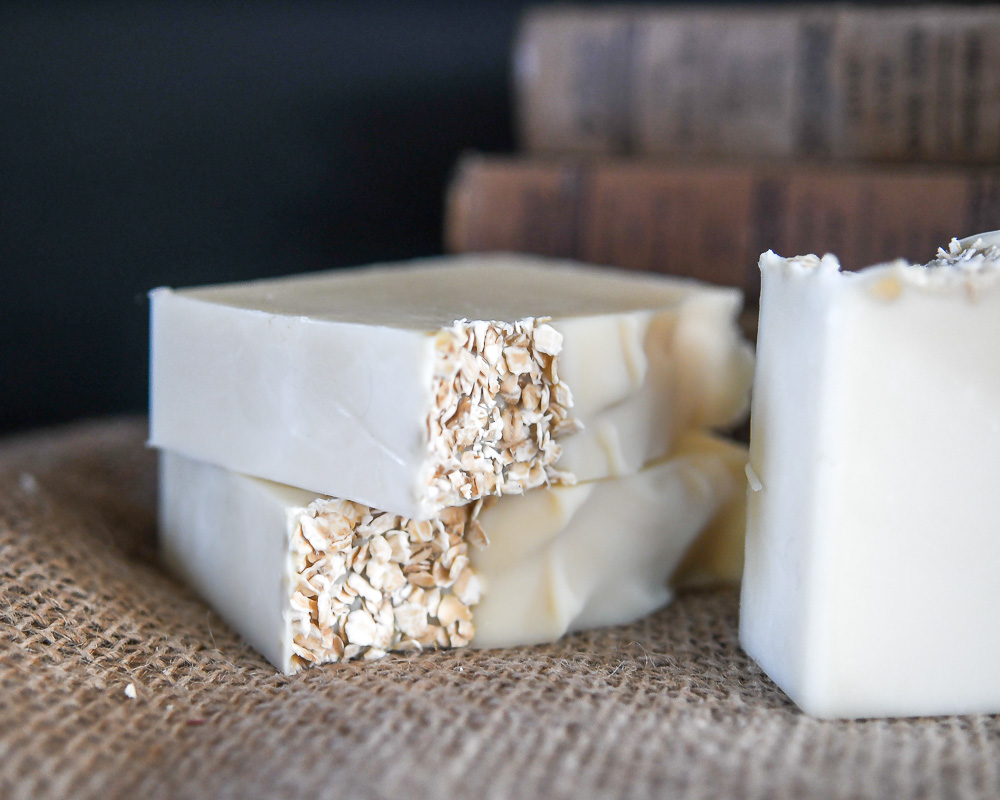
This recipe is simple yet one of my favorites! It makes great presents and is a staple in my household.
Have fun with additives, colors, and decorative tops. Make it your own.
Frequently Asked Questions
- Facebook Group – Soap Making from Beginners to Advanced
- Tree Marie Soapworks is one of my FAVORITE resources for all things soap.
- This is her Cold Processed Goat Milk Soap Video that I’ve watched a million times
- I also like Bramble Berry as a good resource for all things soap, supply, and DIYs
Currently, I’m purchasing most of my Oils and Fats from Amazon. I buy this coconut oil, and this olive oil. It’s the most cost effective way for me at the moment.
I buy most of my other additives from Bramble Berry and from Nature’s Garden. It depends on what I’m looking for honestly. I love their rewards and the quality of their products are the best.
I almost exclusively purchase scents from Nature’s Garden. The main reason is they provide the best information on how the oils will react when cold and/or hot processing soap. Some oils, like essential oils, will cause the saponification process to accelerate and seize your soap quickly. Also, some oils will discolor your soap.
Nature’s Garden is really good about researching and providing you with all the necessary information. This keeps you from finding out the hard way!
I hope this recipe really inspires your to try to make your own goat milk soap! It’s become a staple in our household, and I don’t doubt you will fall in love with it as I have!
Happy creating,

SHOP THIS POST

RELATED POSTS:
HELLO & WELCOME
Thanks for visiting my little piece of the internet!
I’m Maria, a lover of furry things, coffee and anything creative. This blog is where I love to share affordable home decor ideas, great DIYs, yummy recipes, unique crafts and so much more.
ETSY SHOP
RECENT POSTS

